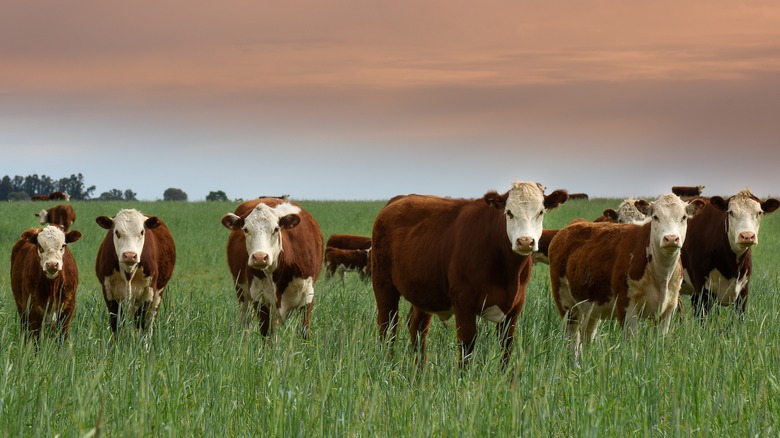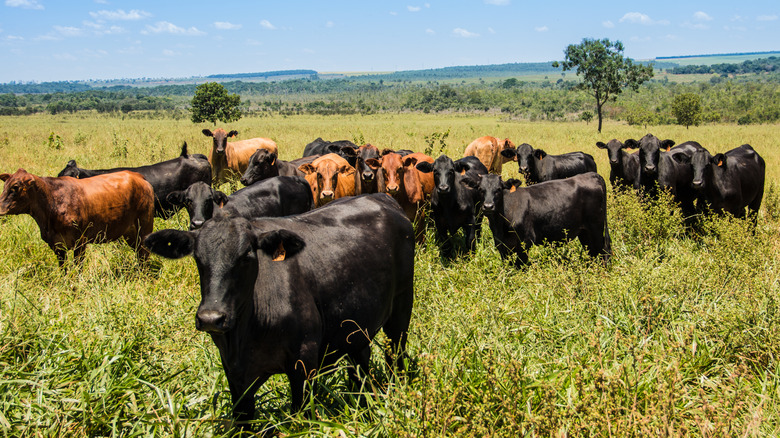The Real Reason Grass-Fed Beef Is More Expensive Than Regular Beef
Whether it's for health, environmental, or economic reasons, people have increasingly chosen grass-fed beef over conventional cattle that traditionally eat a grain-based diet, which typically includes corn.
According to Mayo Clinic, the heart could benefit from grass-fed beef because it may have lower fat content, more omega-3 and omega-6 fatty acids, and more antioxidant vitamins, including vitamin E. Science has shown that grass-fed cattle that are left to graze in fields have less of a negative impact on the environment, according to an NPR article. Other people choose to eat grass-fed beef because they feel it is more humane or they want to support smaller, independent farms where it is raised.
According to the United States Department of Agriculture, grass- or forage-fed meat refers to animals who eat grass and other forage for the entirety of their lives, except for the period before weaning when they are fed milk. The USDA specifies that the animal's diet should consist only of grasses, forage (such as legumes), browse, or cereal grain crops in the vegetative (pre-grain) state. These animals also cannot be fed grain or grain byproducts and must always be allowed to access a pasture during the growing season.
What factors contribute to the cost of meat?
One of the primary factors for why grass-fed beef costs more to buy than corn-fed animals is that the cost to raise an animal that eats a more natural diet is more expensive.
According to Beef Cattle Extension, what a person pays for a pound of beef is primarily affected by the cost of feed that the cow or steer eats because it is the most significant expense a farmer has as they raise a calf until it is old enough to be sent to slaughter. Other factors that contribute to the cost of raising cattle are sheds or other forms of housing and health care, such as vitamins, vaccines, and deworming, per Iowa State University.
NPR reports that grass-fed cattle are sent to slaughter later than conventionally-fed cattle because their diet contains fewer calories, meaning they take longer to reach optimal weight for slaughter. And, as a result, more money is spent over time to care for them. When slaughtered, grass-fed cattle generally weigh about 1,200 while grain-fed cows weigh closer to 1,350 pounds, per NPR, which means that a farmer will not get as much meat to sell from a grass-fed cow.
Ultimately, the cost to care for and raise a grass-fed cow or steer is reflected in the price per pound you'll be paying in the meat section at your grocery store.

